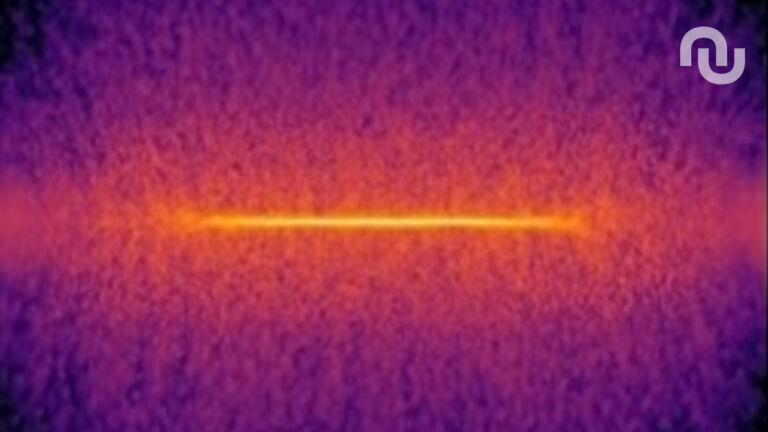Publié : 25 November 2025
Actualisé : 10 hours ago
Fiabilité : ✓ Sources vérifiées
Je mets à jour cet article dès que de nouvelles informations sont disponibles.
📋 Table of Contents
Imagine for a moment: you hold in your hands the ultimate map of your neighborhood. Not a rudimentary map with a few main streets, but EVERY house, every tree, every movement of every inhabitant over the last 100,000 years. That’s pretty much the feat a team of Japanese researchers has just accomplished, but on the scale of our galaxy, the Milky Way. And believe me, it’s much more than just a map.
Until now, mapping the 100 to 150 billion stars in our galaxy felt like science fiction. The best simulations struggled to reach a billion stars, and that took months of intensive calculations. But that was before. Before artificial intelligence got involved.
🌌 The Cosmos Under a New Lens
Hold on tight: a new simulation, boosted by AI and supercomputers, has just unveiled a Milky Way map of unprecedented precision. We’re talking about 100 billion stars, almost all of them, and the ability to observe their movements over a 100,000-year period. It’s like going from an impressionistic painting to an ultra-HD photo of the universe.
This breakthrough is crucial for understanding the mysteries of our galaxy: how it formed, its complex structure, and how all these celestial bodies, from stars to gas clouds, interact and move. Real observations are limited, and models must juggle an infinite number of variables. The Milky Way is certainly not a quiet river!
The key takeaway: A revolutionary simulation, combining AI and supercomputers, has mapped 100 billion Milky Way stars and their evolution over 100,000 years. This is a giant leap for astrophysics.
🚀 When Science Takes a Giant Leap
To better grasp the scale of this achievement, let’s make a quick comparison. Previously, the most advanced simulations modeled our galaxy with about a billion “particles,” each representing a hundred stars. To simulate a million years, it took about 13 days of non-stop calculations. Imagine the time for a billion years!
These older models were sufficient for major events but sorely lacked detail. Each “star” was effectively a giant cluster. The new model? It multiplied the number of directly visible particles by a hundred, offering an astounding level of detail. And calculation time has melted away like snow in the sun.
| Feature | Old Simulation | New Simulation (AI) |
|---|---|---|
| Number of Stars Simulated | Up to 1 billion | Up to 100 billion |
| Detail per “Particle” | 1 particle = 100 stars | 1 particle = 1 star (approx.) |
| Calculation Time (1 million years) | ~13 days | Less than 3 hours |
| Calculation Time (1 billion years) | Years | ~4 months |
Why so much detail? Because our galaxy is a theater of complex events: supernova explosions, colossal gravitational attractions, movements of interstellar gas and dust… Everything is interconnected and unpredictable. Observing all this at the individual star level is like having a microscope on the universe.
🧠 AI, Our New Stellar Compass
So, how did they pull off this feat? Not by stacking thousands of computers, which would have been an energy drain and not necessarily more efficient. The key is artificial intelligence, specifically a machine learning technique. The AI was trained to anticipate the behavior of gases after major events like a supernova, up to 100,000 years. Without this AI, simulating all these details would have been a computational nightmare.
Important: The AI doesn’t replace calculations; it intelligently optimizes them. It predicts complex dynamics (like post-supernova gases) to avoid overloading supercomputers with repetitive, energy-intensive computations.
This approach allows for a much smoother and faster simulation. It’s a bit like the AI being a conductor who can predict the musicians’ notes before they even play them, making the galactic symphony much more harmonious to simulate.
“We hope this methodology, capable of grasping both large-scale movements and localized variations, will find applications far beyond astrophysics.”
💡 Beyond the Stars: Earthly Applications
And that’s not all! The applications of this new method could extend beyond the confines of space. Researchers are already envisioning its use in other fields where it’s crucial to study both global and local phenomena. Think of weather forecasting, the complex movements of oceans, or climate modeling. Systems where interactions are so numerous they often defy our computational capabilities.
This technology could help us better understand and predict terrestrial systems just as complex as our galaxy. It’s a beautiful testament that the stars can enlighten us not only about the distant universe but also about our own planet.
In short, this new map of the Milky Way is more than just an image. It’s a window into the history and future of our galaxy, made possible by the fascinating union of astrophysics and artificial intelligence. The cosmos has never been closer, nor more detailed. And that, my friends, is truly big news for all lovers of stars and tech!
















0 Comments